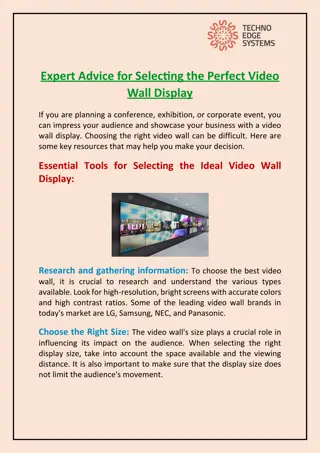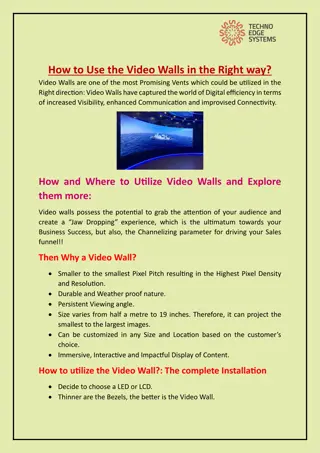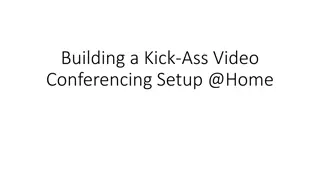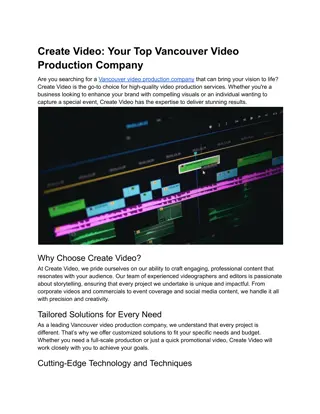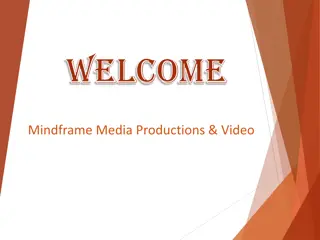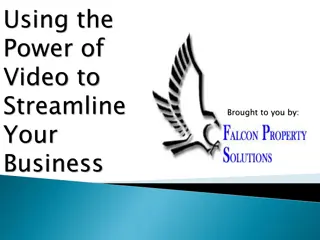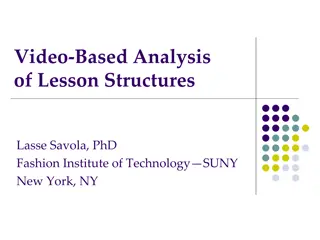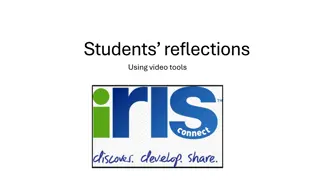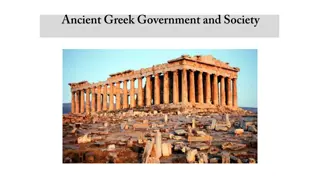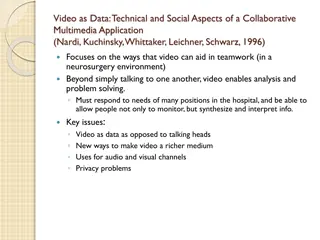How to Use Overlays to Enhance Video
// /how-to-use-overlays-to-enhance-video-aesthetics/nLearn how to use overlays to enhance video aesthetics with effects, textures, and graphics. Improve visual appeal and create stunning videos effortlessly!n
Uploaded on Mar 10, 2025 | 1 Views
Download Presentation

Please find below an Image/Link to download the presentation.
The content on the website is provided AS IS for your information and personal use only. It may not be sold, licensed, or shared on other websites without obtaining consent from the author. Download presentation by click this link. If you encounter any issues during the download, it is possible that the publisher has removed the file from their server.
E N D
Presentation Transcript
How to Use Overlays to Enhance Video Aesthetics Overlays are among the most versatile tools available to elevate the visual appeal (look and feel) of videos in video editing. They can transform an ordinary video into a compelling visual experience. Yet, most editors are still only scratching the surface of what overlays can do for their videos. But, if you do not want to be one of them, keep reading. This blog will explain how overlays work and how to use them to enhance video aesthetics. What Are Overlays in Video Editing? In video editing, an overlay is any additional visual or graphic element layered on top of your base (main) footage. This could be: Text Overlays: Titles, subtitles, captions, or callouts that provide information or context. Graphic Overlays: Logos, images, icons, animations, lower thirds, or visual effects. Color Overlays: Tinting or gradients that evoke specific moods. Video Overlays: Secondary footage, such as bokeh lights or atmospheric elements. Light Leaks: These mimic the effect of natural light spilling into the lens, creating a warm, soft glow or streaks of light. Textures: These are textures (like film grain, scratches, and film burns) that mimic the look of analog film. Lens Flares: These overlays simulate the effect of light refracting through a camera lens. You can use all these types of overlays in nearly any genre or style of production. They are meant to complement your video without overpowering the main content. Think of them as a way to enhance a scene without altering the original footage. How Overlays Can Enhance Your Video When you use overlays effectively, they can transform a simple video into a professional-grade video. They can also help you to experiment with styles, tones, and effects without re-shooting footage and elaborate on-set setups. Here is how: Setting the Mood Overlays can help establish a video s tone and mood. For instance, a warm light-leak overlay can evoke feelings of nostalgia or romance, making it perfect for wedding videos. On the other hand, glitch overlays can add a modern, edgy vibe to tech or startup-related video content. Similarly, gritty film grain can make a documentary feel more raw and authentic. Adding Depth Overlays such as bokeh effects or lens flares can give your footage a sense of dimension. This is especially useful in creating immersive storytelling experiences for music videos or cinematic projects. Guiding Viewer Attention Strategic use of text overlays, such as titles, captions, or directional arrows, can help direct your viewers focus on the most important parts of the video. This technique is invaluable in emphasizing transitions or key scenes in real- estate videos, corporate films, or educational videos where you want to convey information clearly. How to Use Overlays Effectively While overlays might seem like a simple add-on effect, using them effectively requires a thoughtful approach. If you overuse or integrate them into your videos poorly, they can distract your audience rather than engage them. At Motion Edits, we use overlays with a high level of precision and a clear vision, and we are here to tell you how you can do it, too. The three-step guide below will show you how to add overlays to elevate your video projects:
Step 1. Choose the Right Overlay for Your Video The key to successful overlay use lies in selection. Not every overlay suits every project. For instance, a vintage film grain overlay might enhance a historical documentary but clash with a sleek corporate video. So, before applying an overlay, consider what you want to achieve and understand your project s mood, tone, and purpose. Then, choose the overlay that matches your needs. Step 2. Layer the Overlays Once you import your video into your editing software, you can add your overlays. You can layer them above the main footage on the editing timeline by adjusting the blending mode (such as Screen or Overlay ). However, remember, too many overlays can distract or clutter the screen, so focus on subtle and non-intrusive effects. Step 3. Refine and Add the Final Touches Preview your video multiple times to ensure the overlays enhance the overall aesthetic rather than distract from it. Once the overlay is integrated, you can use additional color grading or visual adjustments to help blend your overlays with the footage. This ensures a polished, cohesive result. For example, our video editors often fine-tune opacity, brightness, and contrast to ensure overlays complement the footage and do not distract from the scene s primary action. Outsource Overlay Work for Complex Projects While many video editing software tools offer built-in overlays or easy-to-use plugins, sometimes it is worth considering the expertise of a team like ours at Motion Edits, who knows how to create the best overlays result that might be difficult or time-consuming to achieve on your own across large-scale or complex projects with tight deadlines. Our video editing professionals specialize in enhancing your videos through expert editing techniques, including overlays, VFX, and 3D animation. Whether you are working on a wedding video, an app video, a YouTube video, or a short film, our team can help you make your video feel more refined and visually appealing like it was produced by a big-budget studio. Contact us today to learn more about our video editing and post-production services and discover the difference professional editing can make.
CONTACT US Address - 4010 Stasney street, College station, TX, 77840 E-mail - video@motionedits.com Website - www.motionedits.com





